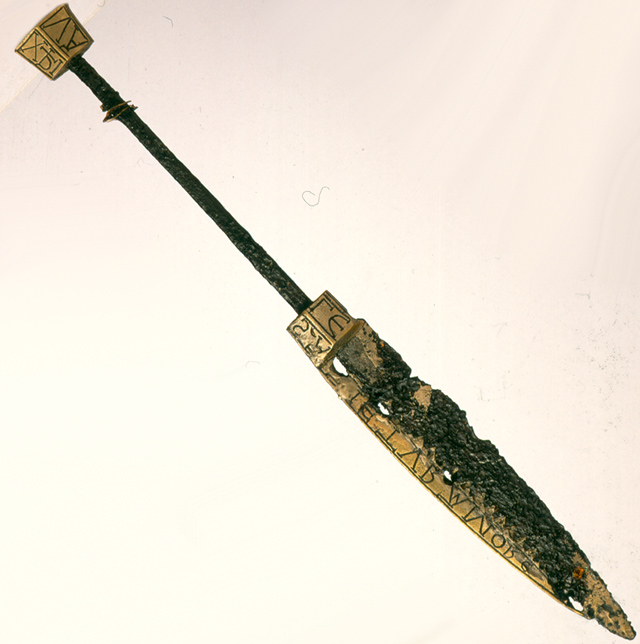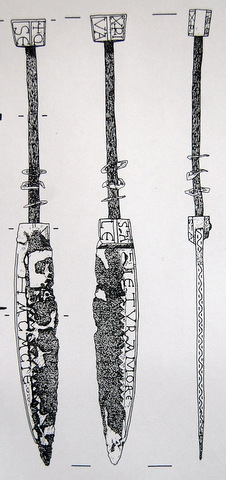

The rare and unusual Waterford knife was discovered during an archaeological excavation in the south eastern Irish city. It consists of an iron blade and handle which are covered in inlaid copper-alloy plates. These are in turn richly decorated in both text and motifs.
Probably dating from the 12th century, the knife measures 260 mm long, with the blade making up 128 mm of this length. The handle would have originally been covered in a perishable material such as wood or bone.
A comparable knife is known from Winchester, England, which also dates from the 12th or 13th centuries. The Winchester knife is similarly covered in decorated inlaid plates but the lacks the text seen on the Waterford example.
The inscription on the Waterford knife is written in Latin and the surviving text appears to read ‘What is cut with this sharp edge, may it be filled with the powerful love of Christ’ (OKasha 1992, 528). This suggests that this ornate blade may have had a religious function, such as cutting the blessed but un-consecrated bread after mass for distribution to the poor (ibid, 527).
References
Okasha, E. 1992 ‘The inscribed knife’ in Hurley, M. et al Late Viking Age & Medieval Waterford Excavations 1986-1992. Waterford, 524-528



3 thoughts on “The Waterford Knife”